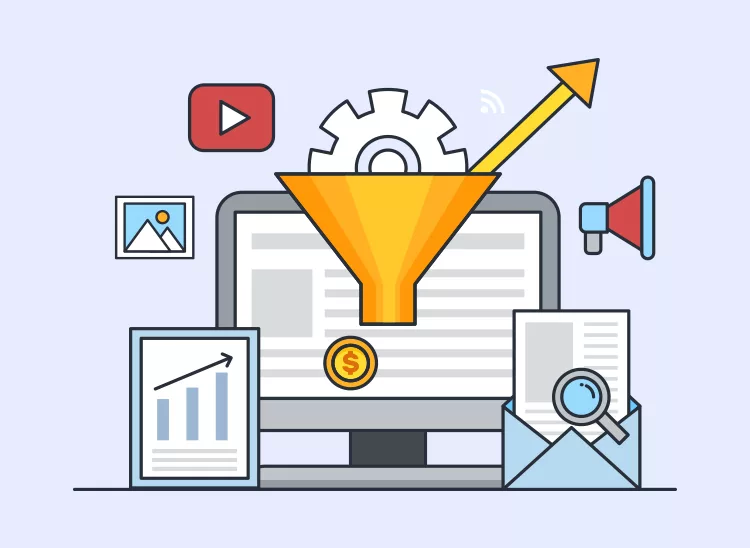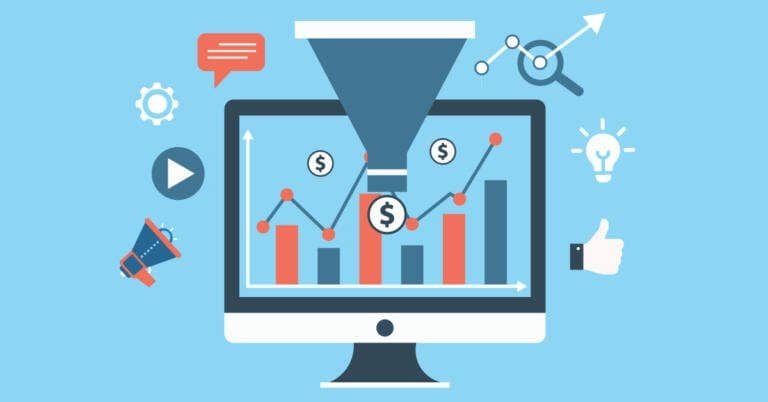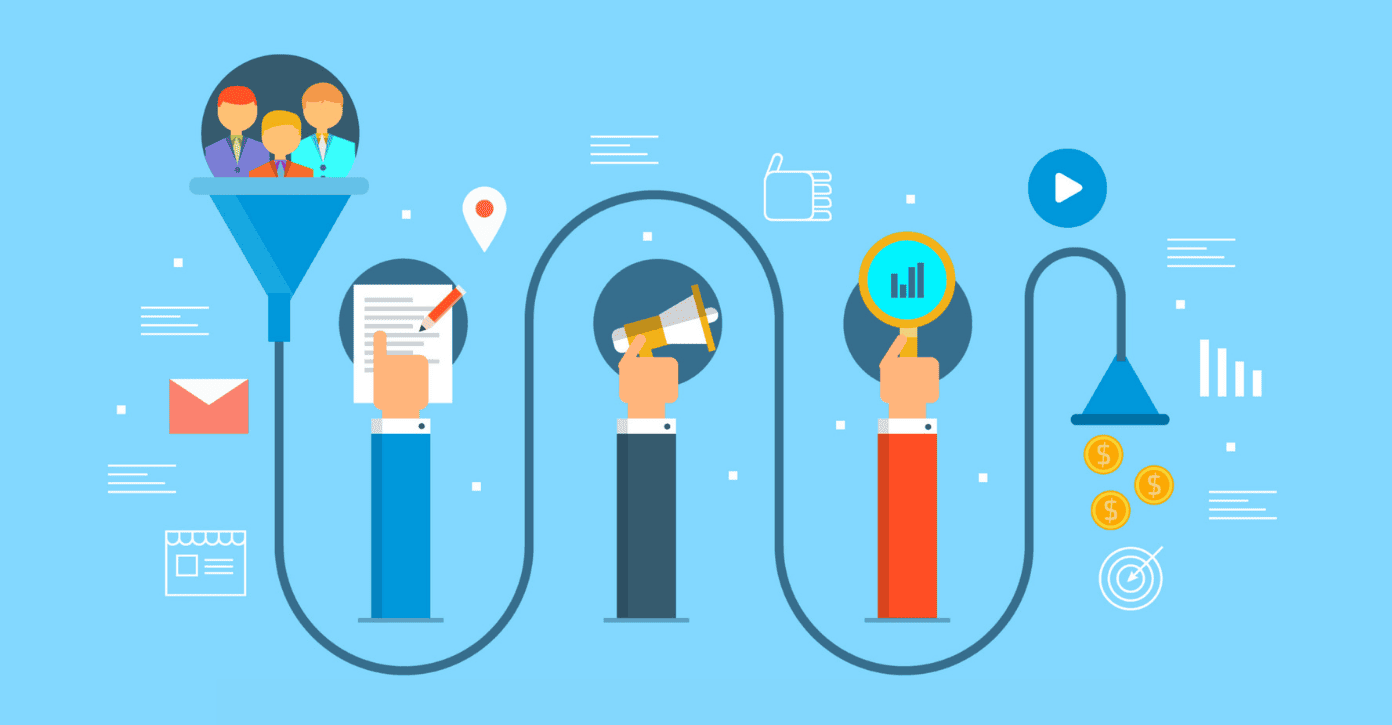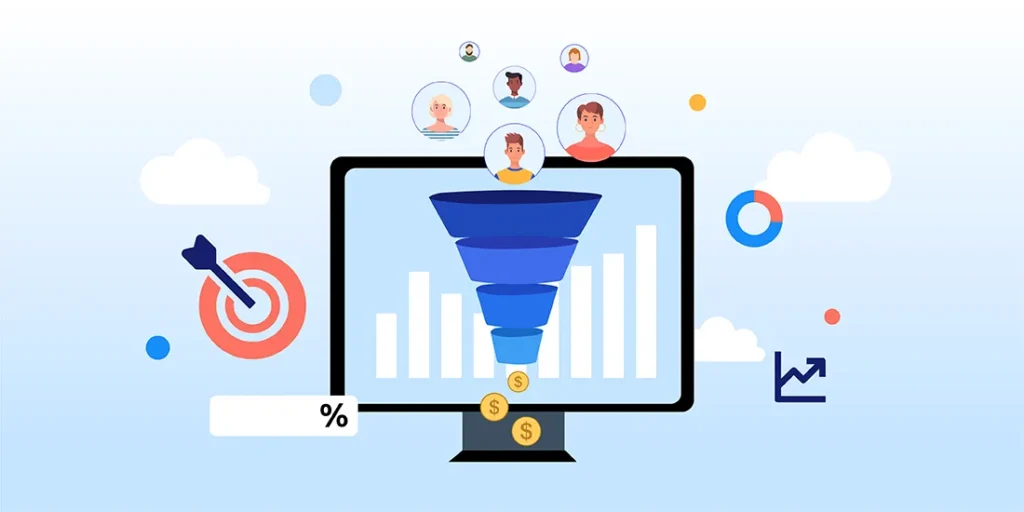Hey there! Ever wondered how some businesses seem to effortlessly guide customers towards a purchase? Like a magician weaving an enchanting spell, they use a carefully crafted sales funnel strategically infused with psychological principles to influence and persuade. Buckle up because today we’re taking a deep dive into the captivating world of advanced sales funnels and the powerful psychology that makes them tick. These funnels guide potential customers through a personalized journey, addressing their needs and concerns while building trust at each stage. By leveraging sales funnels as a growth strategy, businesses can optimize their marketing efforts and significantly increase their conversion rates. As we explore the key elements of these funnels, you’ll discover how to harness their potential for your own enterprise.
Unmasking the Psychological Powerhouses
Now, let’s get to the heart of the matter—the psychological principles that fuel these funnels. You see, understanding human behavior is the key to crafting a sales funnel that truly converts. Here are some of the most potent psychological weapons in a marketer’s arsenal:
1. Social Proof: The “Everybody’s Doing It” Effect—The Herd Mentality
We humans are social creatures. We crave belonging and look to others for guidance, especially when faced with uncertainty. This inherent need for validation is where social proof comes into play. When we see others enjoying a product or service, it gives us a sense of security and increases our desire to join the party.
Harnessing the Power of the Crowd:
- Testimonials and Reviews: Showcase glowing reviews from happy customers. Let their experiences speak volumes about the value you offer.
- Social Media Engagement: A bustling social media presence with loads of likes, comments, and shares screams popularity and trustworthiness.
- Case Studies: Highlight success stories, demonstrating how your product or service has transformed the lives of others.
2. The “Liking” Principle: Building Rapport for Unstoppable Influence—Friends Buy from Friends
We’re more inclined to say “yes” to people we like and trust. It’s a simple yet powerful truth. But how do you cultivate that sense of liking in the digital realm?
Winning hearts and minds:
- Authenticity and Transparency: Be genuine and relatable. Let your personality shine through! People connect with realness.
- Storytelling: Share captivating stories that resonate with your audience’s emotions and values.
- Find Common Ground: Highlight shared interests and values. Create a sense of connection and camaraderie.
3. Consistency and Commitment: Small Steps to Big Wins—One Foot in the Door
We humans have a deep-seated desire to be consistent with our words and actions. We want to maintain a positive self-image and avoid the uncomfortable sting of hypocrisy. This is where the principle of commitment and consistency comes into play. By securing small, initial commitments, you pave the way for larger ones down the line.
The Art of Gradual Engagement
- Freebies and Lead Magnets: Offer valuable resources in exchange for an email address. This small commitment starts the ball rolling.
- Surveys and Quizzes: Encourage engagement and interaction. The more invested someone is, the more likely they are to continue the journey.
- Progressive Profiling: Gather information gradually, building trust and deepening the relationship over time.
4. Reciprocity: The Give and Take Dance—You Scratch My Back, I’ll Scratch Yours
Remember that feeling of obligation when someone does something nice for you? That’s the reciprocity principle in action. When you offer something of value, people naturally feel inclined to give back.
The Gift That Keeps on Giving:
- Free trials and samples: Allow potential customers to experience the value firsthand, creating a sense of indebtedness.
- Exclusive content and webinars: Provide valuable insights and knowledge, positioning yourself as a trusted advisor.
- Personalized Recommendations: Show that you care by tailoring suggestions to individual needs and preferences.

Ethical Persuasion: The Power of Trust
Now, before you unleash these psychological powerhouses, remember that with great power comes great responsibility. Ethical marketing is all about building genuine relationships and providing real value.
Listen to Your Gut: If a marketing tactic feels sleazy or manipulative, it probably is. Trust your instincts and steer clear of anything that makes you question your values.
Building Trust is Paramount: Ethical marketing isn’t about tricking people into buying things they don’t need. It’s about creating win-win situations where both you and your customers benefit.
Constructing Your Ultimate Persuasion Machine
Let’s take a look at how these psychological principles translate into the different stages of a high-converting sales funnel. Remember, each step is carefully designed to nurture the relationship, build trust, and guide the customer towards a confident decision.
1. Awareness: Sparking Curiosity and Captivating Attention – Making a Grand Entrance
This is where you grab your audience’s attention and make a memorable first impression.
- Content Marketing: Create valuable, engaging content that educates, entertains, and provides solutions to your target audience’s pain points.
- Social Media Marketing: Be active on platforms where your audience hangs out. Share compelling stories and visuals that stop the scroll.
- Paid advertising: Target specific demographics and interests to reach the right people with your message.
2. Interest: Piquing Curiosity and Building Anticipation—The Teaser Trailer of Your Brand
Once you’ve captured their attention, it’s time to pique their interest and make them eager to learn more.
- Lead Magnets and Freebies: Offer irresistible incentives in exchange for contact information. Think ebooks, checklists, templates, or exclusive discounts.
- Webinars and Online Events: Host informative sessions that dive deeper into topics relevant to your audience’s needs.
- Engaging Email Sequences: Deliver value-packed emails that nurture the relationship and build anticipation.
3. Desire: Igniting the Spark and Fanning the Flames—Creating Irresistible Appeal
This stage is all about creating a strong emotional connection and making your audience genuinely desire what you have to offer.
- Product demonstrations: Showcase the benefits and features of your product or service in action. Let them see how it can solve their problems.
- Customer Testimonials and Case Studies Highlight the positive experiences of others, leveraging the power of social proof.
- Benefit-Driven Copywriting: Speak directly to your audience’s desires, aspirations, and pain points. Paint a vivid picture of how your offering can transform their lives.
4. Action: The Moment of Truth—Sealing the Deal
This is the culmination of all your efforts, the point where you convert interest and desire into tangible action.
- Clear Call to Actions: Make it crystal clear what you want your audience to do next. Use strong action verbs and create a sense of urgency.
- Limited-Time Offers and Scarcity: Introduce a sense of urgency and exclusivity to encourage prompt action.
- Guarantee and Risk Reversal: Eliminate doubts and fears by offering guarantees and risk-free trial periods.
5. Loyalty: Beyond the Transaction: Cultivating Lifelong Fans
The journey doesn’t end at the point of sale. This stage is about nurturing the relationship, exceeding expectations, and turning customers into raving fans.
- Personalized Follow-Up: Stay top of mind with personalized emails, exclusive offers, and helpful resources.
- Loyalty Programs and Rewards: Show appreciation for repeat customers with exclusive perks and benefits.
- Community Building: Create a sense of belonging and encourage interaction among your customer base.

Advanced Tactics for Supercharged Funnels
Now that you’ve got the foundational principles down, let’s explore some advanced tactics that can elevate your funnels to a whole new level:
1. Personalization: The Power of “Just for You”—Tailoring the Experience
Imagine receiving marketing messages that feel like they were crafted specifically for you. That’s the magic of personalization! By tailoring your messaging and offers to individual needs and preferences, you create a more engaging and relevant experience.
- Dynamic Content: Serve up different content based on user behavior, demographics, or purchase history.
- Personalized Recommendations: Suggest products or services based on past purchases or browsing activity.
- Targeted Email Campaigns: Segment your audience and deliver highly relevant messages that resonate with their specific interests.
2. Automation: The Efficiency Engine—Streamlining the Customer Journey
Automation is like having a tireless assistant working 24/7 to nurture your leads and move them through the funnel. It frees up your time so you can focus on strategic initiatives while ensuring a seamless customer experience.
- Email Marketing Automation: Set up automated email sequences triggered by specific actions, such as subscribing to your list or abandoning their cart.
- Chatbots: Provide instant support and answer common questions, guiding customers through the funnel with ease.
- Social media scheduling: schedule your social media posts in advance to maintain a consistent presence and reach your audience at optimal times.
3. A/B Testing: The Data-Driven Approach to Optimization—The Scientific Method of Marketing
Don’t leave your funnel’s success to chance! A/B testing allows you to experiment with different elements of your funnel, measure the results, and make data-driven decisions.
- Headlines and Copy: Test different variations to see what resonates best with your audience.
- Call to Actions: Experiment with different button colors, text, and placement.
- Landing Page Designs: Test different layouts, visuals, and content to optimize conversions.
Measuring Success: The Metrics That Matter
The beauty of online marketing is that you can track virtually everything! By monitoring key metrics, you can gain invaluable insights into your funnel’s performance and make adjustments to improve its effectiveness.
- Conversion Rates: This tells you how many people are taking the desired action at each stage of the funnel.
- Click-Through Rates: Measure how engaging your emails, ads, and landing pages are.
- Customer Lifetime Value: Understand the long-term value of your customers and focus on acquiring those who are most profitable.

Conclusion
Whew! That was quite a journey, but we’ve only just scratched the surface. The world of advanced sales funnels and persuasive psychology is vast and constantly evolving. The key takeaway? By understanding the psychological principles that drive human behavior, you can craft a sales funnel that not only converts but also builds lasting relationships with your customers. By delving deeper into the psychological aspects of sales funnels, you can identify the emotional triggers that resonate with your target audience. This understanding enables you to create tailored messaging that speaks directly to their needs and desires, ultimately enhancing the customer experience. Remember, a well-crafted sales funnel isn’t just about closing deals; it’s about fostering trust and loyalty that will keep customers returning for more.
Remember, ethical marketing is all about providing genuine value and building trust. Use these psychological insights responsibly, and you’ll be well on your way to creating a thriving business that leaves a positive impact on the world.
FAQs
How long does it take to build a successful sales funnel? There’s no one-size-fits-all answer, as the time it takes to build a successful sales funnel can vary widely depending on your industry, target audience, and marketing efforts. However, it’s important to remember that building a high-converting funnel is an ongoing process that requires consistent effort and optimization. Be patient, persistent, and always be learning and adapting!
What are some common mistakes to avoid when building a sales funnel? One of the biggest mistakes is neglecting to understand your target audience. Take the time to research their needs, pain points, and aspirations. Another common pitfall is failing to provide enough value at each stage of the funnel. Remember, you need to earn their trust and attention. Lastly, don’t forget to test and optimize! What works for one business may not work for another.
How can I measure the return on investment (ROI) of my sales funnel? Measuring ROI is essential to ensuring your marketing efforts are effective. Track your conversion rates, cost per acquisition, and customer lifetime value. By analyzing these metrics, you can determine which parts of your funnel are performing well and identify areas for improvement. Remember, ROI isn’t just about short-term profits; it’s about building long-term, sustainable growth for your business.

